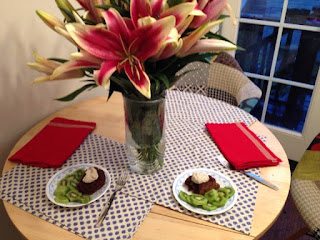In the aftermath of the World Health Organization report published yesterday, which linked red and processed meat to cancer risk, several of my friends have recurred to Facebook to reiterate their commitment to stuffing their faces with bacon, because it’s tasty, goddammit, and because the minuscule increase in risk is not worth giving up their delightful pleasure. As a reward for this sentiment, they get “likes”, and “mmmm, bacon”, and smiley emoticons.
I understand why people do this. They cling to what they know and are used to, they don’t want to change, and they therefore reject new information that contradicts their old ways. It’s the oldest heuristic in the Kahneman and Tversky bag of tricks. Moreover, if they post about their desire to cling to their habit, they’re bound to get “likes” and other confirmations from people who are also reluctant to let go, which strengthens their resolve to stick with it.
I also understand how easy it is to ignore the realities of what one is eating as long as one is not directly confronted with them. Any disruption of this ignorance (such as a new report or a vegan’s presence) reminds people of things they don’t like to think about, such as that the meat on their plate once swam, walked, flew, enjoyed the sunshine, and wanted to continue living. Or that the meat on their plate came from someone who lived their lives in conditions comparable to those in a concentration camp before being deprived of life. It’s not a comfortable thought; we all like to believe that we are good people, so it’s easier to ignore our complicity in something horrible and go back to one’s meat-eating support base and get some pats on the back.
Nonetheless, reading these posts throws me into an abyss of distress. I get that it’s hard for people to let go of what was traditionally on their plate. But to take moral relish in the killing of pigs for taste? To openly revel and boast in opting for participating in the world’s vilest, cruelest industry and in the suffering of living beings because it’s tasty, goddammit? It’s particularly disturbing when it comes from people who I know are committed to world improvement in all other aspects of their lives. From people who cry out against much lesser cruelties on a daily basis. I guess the human rights buck really stops with “human”, even though the desire to live, the love of our offspring, and complex emotions of fear, pain, and suffering, are common to all of us.
When things like this happen, I’m reminded of J. M. Coetzee’s The Lives of Animals. Like his heroine, Elizabeth Costello, “I want to find a way of speaking to fellow human beings that will be cool rather than heated, philosophical rather than polemical, that will bring enlightenment rather than seeking to divide us into the righteous and the sinners, the saved and the damned, the sheep and the goats.” But how do I cope, every day, with friends and acquaintances that I know to be kind, good, moral people, and who participate in the most horrific crime against other living beings every day without batting an eyelash, and feel it is appropriate to gloat and boast about this? It’s a contradiction that is really hard to live with.
Please, open your eyes. If you cut back on animal products–or, better still,eschew them completely–the taste sacrifice you’ll supposedly make is minor (as this blog proves, it’s non-existent!) and you’ll exit the vilest human crime on earth. The cancer prevention is just a side benefit.



